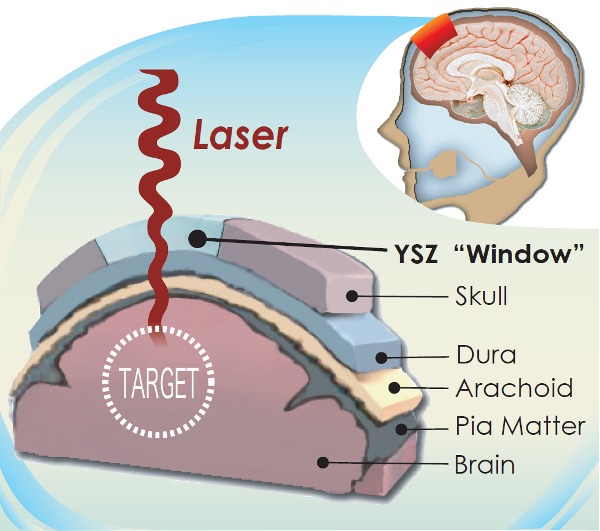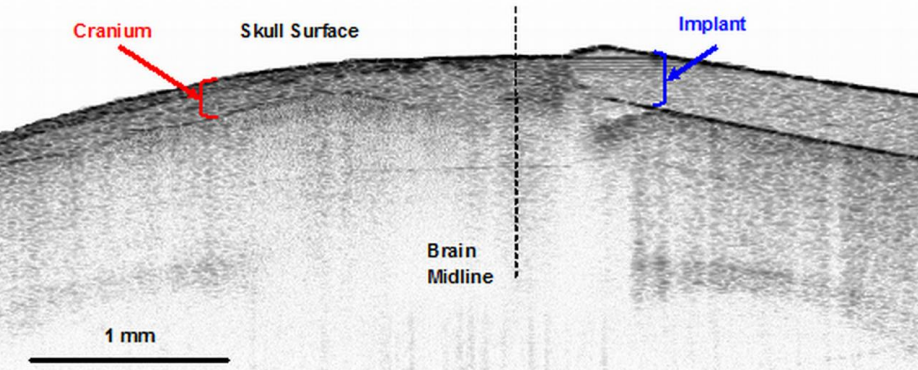Transparent ‘window to the brain’ allows for laser treatments without repeated surgery
September 3, 2013

A cross-section of the head showing how the transparent skull implant works.
University of California, Riverside researchers have developed a novel transparent skull implant that literally provides a “window to the brain.”
They hope to eventually open new treatment options for patients with life-threatening neurological disorders, such as brain cancer and traumatic brain injury.
The implant is made of the same ceramic material currently used in hip implants and dental crowns and is well-tolerated by the body — yttria-stabilized zirconia (YSZ) — but processed to make it transparent.
“This is a crucial first step towards an innovative new concept that would provide a clinically viable means for optically accessing the brain, on-demand, over large areas, and on a chronically recurring basis, without need for repeated craniectomies,” said team member Dr. Devin Binder, a clinician and an associate professor of biomedical sciences at UC Riverside.
Although the team’s YSZ windows are not the first transparent skull implants to be reported, they are the first that could be conceivably used in humans, which is a crucial distinction. This is due to the inherent toughness of YSZ, which makes it far more resistant to shock and impact than the glass-based implants previously demonstrated by others.
This enhances safety and may also reduce patient self-consciousness, since the reduced vulnerability of the implant could minimize the need for conspicuous protective headgear.
Enhancing clinical uses of brain studies

Cross-section of skull showing position of implant (credit: Yasaman Damestani et al./Nanotechnology, Biology and Medicine)
The team also envisions that YSZ windows will facilitate the clinical translation of brain imaging and neuromodulation technologies being developed under President Obama’s recently announced BRAIN (Brain Research through Advancing Innovative Neurotechnologies) Initiative, which aims to revolutionize the understanding of the human mind and uncover new ways to treat, prevent, and cure brain disorders.
The ten-person team is comprised of faculty, graduate students, and researchers from UC Riverside’s Bourns College of Engineering and School of Medicine, headed by Guillermo Aguilar, a professor of mechanical engineering at UC Riverside’sBourns College of Engineering.
The research was supported in part by the UC Riverside Chancellor’s Strategic Research Initiative.